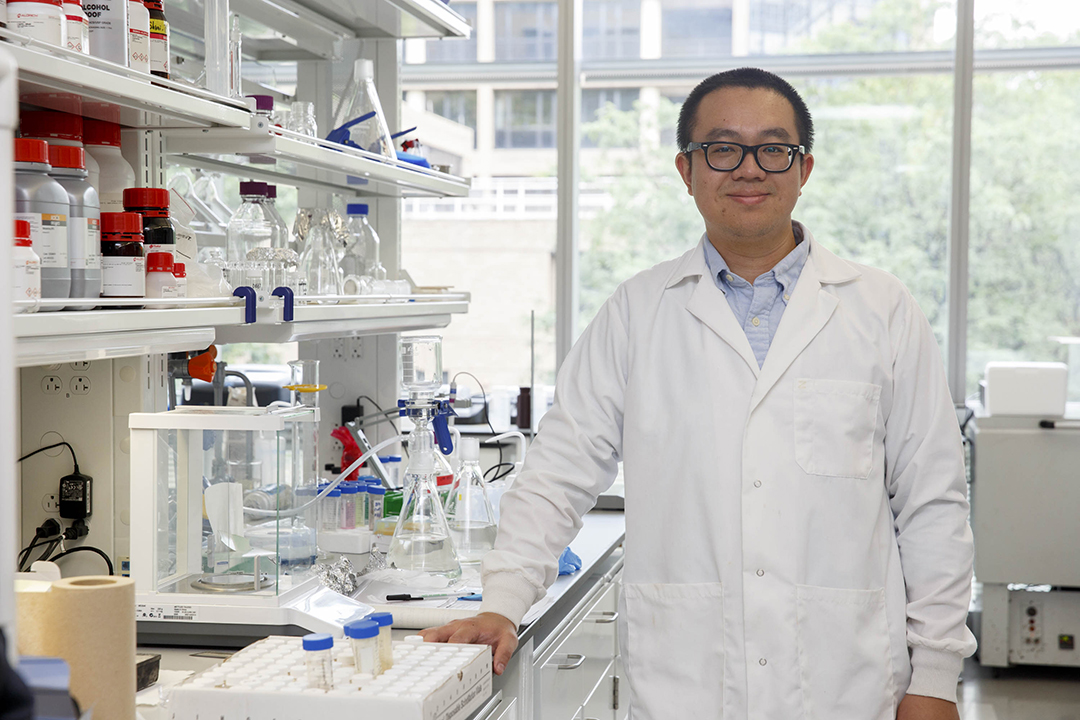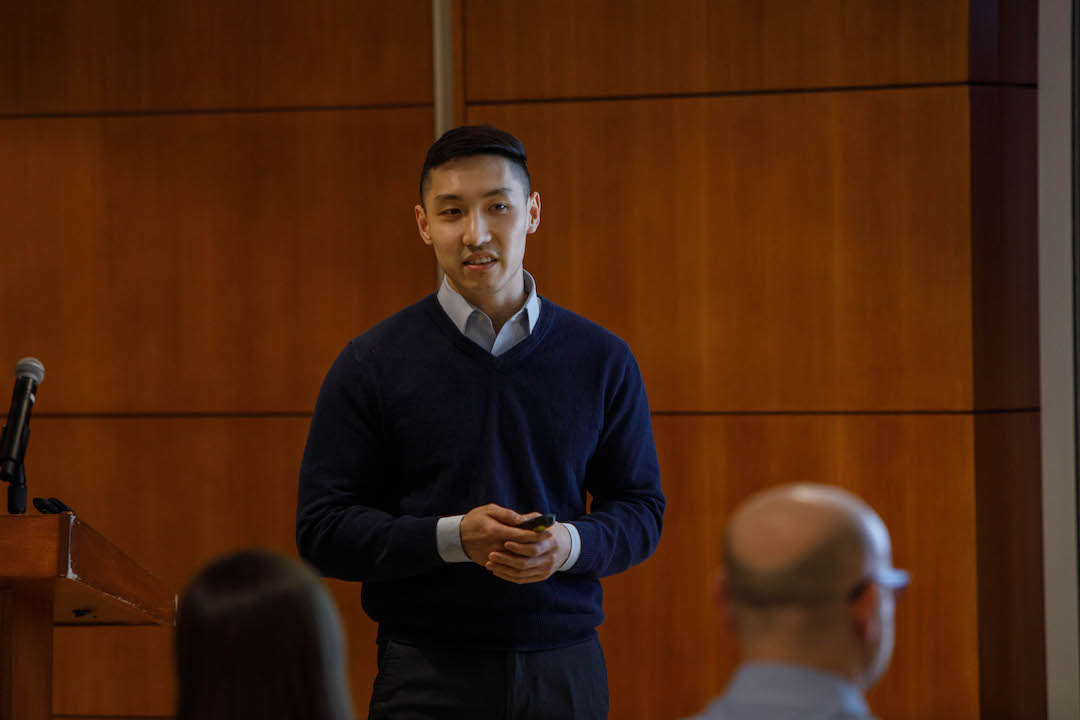By Kristen Mitchell
George Washington University researchers presented novel ideas ranging from efficient voltage converters that could have applications in medical devices to technology that aims to make cyber networks more secure during the 2019 TCO Innovation Competition.
The competition, sponsored by the Technology Commercialization Office within the Office of the Provost, was held in the lower level of Science and Engineering Hall on Tuesday. The commercialization-focused event featured innovations that could be impactful or profitable in the marketplace. GW students, faculty and staff presented five posters focused on life sciences and seven physical science posters, all of which were evaluated by a panel of experienced entrepreneurs, investors and industry professionals.
A finalist and runner-up named for both categories were awarded $30,000 total in prizes and tickets to the next ConnectPreneur event, which brings together regional investors and entrepreneurs. This year’s Innovation Competition included a wide variety of innovative medical devices, therapeutics, internet security devices and electronic devices, said Steve Kubisen, managing director of the Technology Commercialization Office.
“I was impressed by number of students presenting their work on these advanced technologies,” he said. “We had an exceptionally business and technical savvy group of judges with partners in venture capital funds and serial business entrepreneurs. The transfer of technology and business insights was intense.”
Matthew Lumb, a research scientist in the School of Engineering and Applied Science, presented his idea for an efficient and single-component voltage convertor that can boost the capability of a device while also reducing electrical noise. This type of converter could be useful in devices with components sensitive to excess noise, such as medical devices or defense systems.
Dr. Lumb’s converter would be an alternative to current options, which generate waste heat and can require multiple components, he said. He was awarded the first-place prize in the physical science category. He plans to use the funding to build a working prototype and hopes to reach the niche military-use market in 2021 before expanding into medical devices and consumer electronics.
Last year, Dr. Lumb participated in the AccelerateGW I-Corps Site Program, which he credited for helping him hit the ground running when he got the idea for the voltage conversion.
“That was a really terrific learning experience and gave me a lot of good ideas on the first steps, the kind of questions to ask people in the industry,” he said. “I got a lot out of that.”
Benjamin Bowman, a Ph.D. candidate in SEAS, presented his plan to use graphs created through artificial intelligence to make networks more secure. Mr. Bowman works under Professor Howie Huang in the SEAS Graph Computing Lab and presented alongside fellow Ph.D. candidate Bibek Bhattarai.
Network security is a significant challenge in the modern world where data breaches are common and can go undetected for months, Mr. Bowman said. The Graph Computing Lab researchers believe a graph learning product could be installed within existing cyber infrastructure and would better utilize traditional data collected through security logs to provide real-time insights.
“The way that the data is [traditionally] represented, it doesn’t lend itself to the nature of cyber data, which is highly multimodal,” Mr. Bowman said. “You can have many different data points that mean different things, and they can all be interconnected in different ways.”
Here are the three additional winners:
- Mona Zaghloul, Yangyan Zhao, Libin Sun, Stephen Semancik and Kurt Benkstein were awarded the top prize in the life science category for their poster “Ultra-Small Portable Nano Hole Array-based Gas / Condensed Phase Sensing System for Hazard Warning and Health Monitoring.”
- William Weglicki and Iu Tong Mak were awarded second place in the life science category for their poster “Aprepitant (Emend) Prevents Cutaneous Inflammation and Cardiac Dysfunction Due to Erlotinib (Tarceva).”
- Tarek El-Ghazawi, Engin Kayraklioglu, Volker Sorger and Shuai Sun were awarded second place in the physical science category for their poster “The Reconfigurable Optical Computer.”





